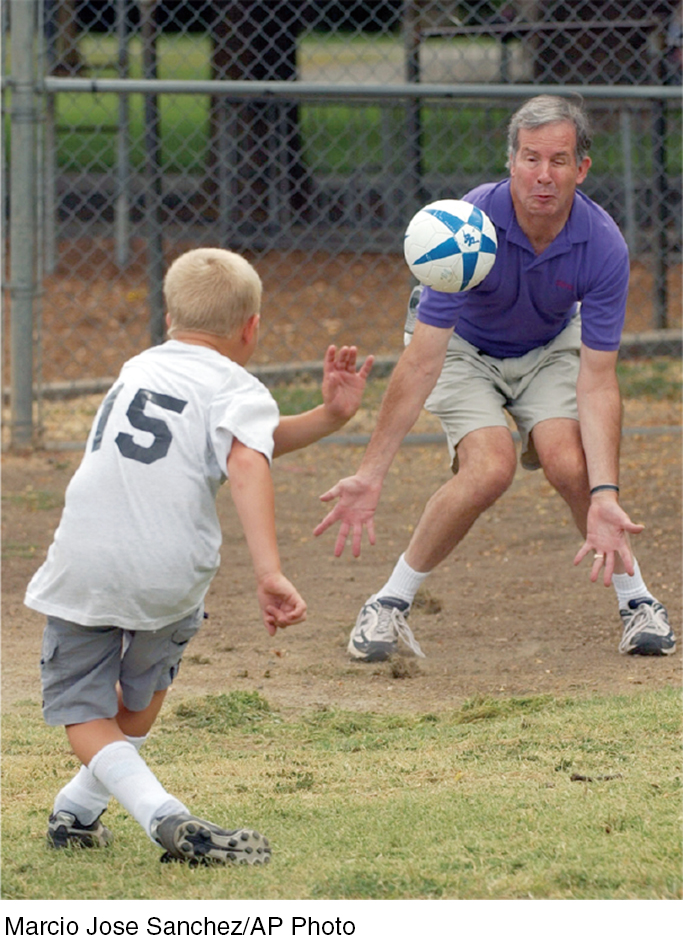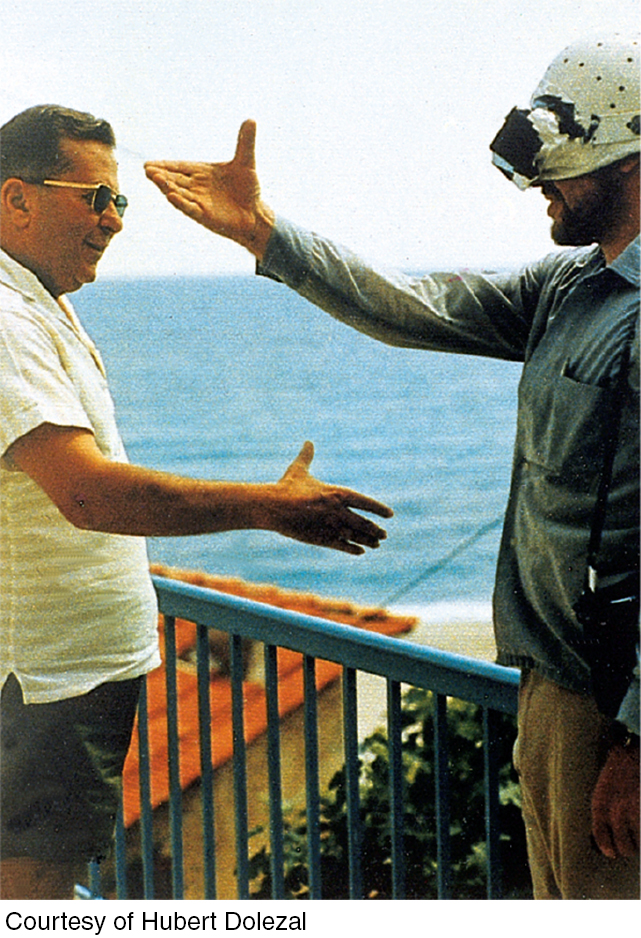17.4 Perceptual Interpretation
 To experience more visual illusions, and to understand what they reveal about how you perceive the world, visit LaunchPad’s PsychSim 6: Visual Illusions.
To experience more visual illusions, and to understand what they reveal about how you perceive the world, visit LaunchPad’s PsychSim 6: Visual Illusions.
Philosophers have debated whether our perceptual abilities should be credited to our nature or our nurture. To what extent do we learn to perceive? German philosopher Immanuel Kant (1724–
“Let us then suppose the mind to be, as we say, white paper void of all characters, without any ideas: How comes it to be furnished? … To this I answer, in one word, from EXPERIENCE.”
John Locke, An Essay Concerning Human Understanding, 1690
Experience and Visual Perception
17-
RESTORED VISION AND SENSORY RESTRICTION Writing to John Locke, William Molyneux wondered whether “a man born blind, and now adult, taught by his touch to distinguish between a cube and a sphere” could, if made to see, visually distinguish the two. Locke’s answer was No, because the man would never have learned to see the difference.

Molyneux’s hypothetical case has since been put to the test with a few dozen adults who, though blind from birth, later gained sight (Gregory, 1978; Huber et al., 2015; von Senden, 1932). Most were born with cataracts—
Seeking to gain more control than is provided by clinical cases, researchers have outfitted infant kittens and monkeys with goggles through which they could see only diffuse, unpatterned light (Wiesel, 1982). After infancy, when the goggles were removed, these animals exhibited perceptual limitations much like those of humans born with cataracts. They could distinguish color and brightness, but not the form of a circle from that of a square. Their eyes had not degenerated; their retinas still relayed signals to their visual cortex. But lacking stimulation, the cortical cells had not developed normal connections. Thus, the animals remained functionally blind to shape. Experience guides, sustains, and maintains the brain’s neural organization that enables our perceptions.
In both humans and animals, similar sensory restrictions later in life do no permanent harm. When researchers cover the eye of an adult animal for several months, its vision will be unaffected after the eye patch is removed. When surgeons remove cataracts that develop during late adulthood, most people are thrilled at the return to normal vision.
The effect of sensory restriction on infant cats, monkeys, and humans suggests that for normal sensory and perceptual development there is a critical period—
perceptual adaptation the ability to adjust to changed sensory input, including an artificially displaced or even inverted visual field.
PERCEPTUAL ADAPTATION Given a new pair of glasses, we may feel slightly disoriented, even dizzy. Within a day or two, we adjust. Our perceptual adaptation to changed visual input makes the world seem normal again. But imagine a far more dramatic new pair of glasses—

Could you adapt to this distorted world? Not if you were a baby chicken. When fitted with such lenses, baby chicks continue to peck where food grains seem to be (Hess, 1956; Rossi, 1968). But we humans adapt to distorting lenses quickly. Within a few minutes your throws would again be accurate, your stride on target. Remove the lenses and you would experience an aftereffect: At first your throws would err in the opposite direction, sailing off to the right; but again, within minutes you would readapt.
Indeed, given an even more radical pair of glasses—
At first, when Stratton wanted to walk, he found himself searching for his feet, which were now “up.” Eating was nearly impossible. He became nauseated and depressed. But he persisted, and by the eighth day he could comfortably reach for an object in the right direction and walk without bumping into things. When Stratton finally removed the headgear, he readapted quickly.
In later experiments, people wearing the optical gear have even been able to ride a motorcycle, ski the Alps, and fly an airplane (Dolezal, 1982; Kohler, 1962). The world around them still seemed above their heads or on the wrong side. But by actively moving about in these topsy-